
All categories
Featured selections
Trade Assurance
Buyer Central
Help Center
Get the app
Become a supplier

(2286 products available)



























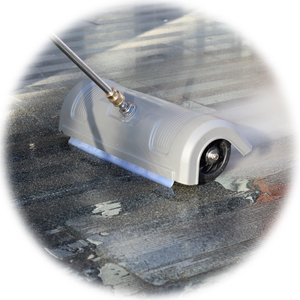
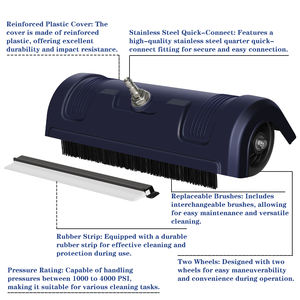
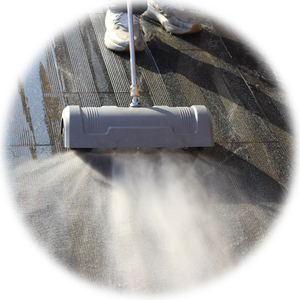
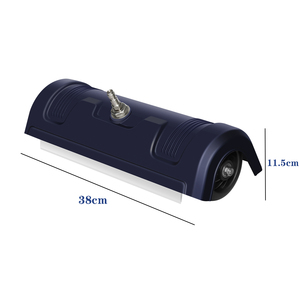
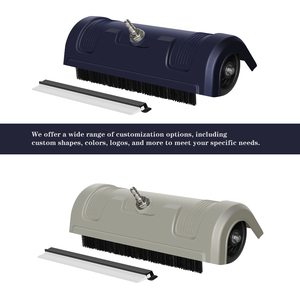
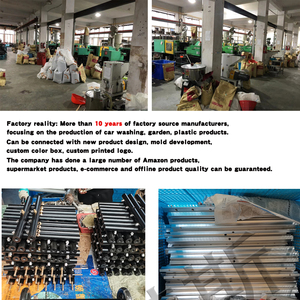



















Used floor cleaning machines come in many types, suitable for different floor types or cleaning needs. They range from manual equipment for light cleaning to mechanical equipment designed for large areas. Consideration of the specific use of each type will help make the right choice of tool, so the following tools will be discussed.
These machines wet scrub the floor to remove stuck dirt. They are equipped with brushes or pads that rotate to remove the dirt after pouring cleaning solution on the floor. Most scrubbers use a vacuum or squeegee to suck or dry the solution and dirt off the floor. Small units are available for compact areas, and larger, ride-on scrubbers are available for spaces up to 35,000 square footage.
This machine makes the floor shine. It is used on floors where waxing or sealing is needed. A buffer has a cleaning pad or cloth attached that spins to either buff or apply a polish to the floor. They work well on floors like VCT, hardwood, laminate, and concrete. Buffers can do light scrubbing or just buff the floor, while polishers apply floor wax or sealant.
This machine vacuums dust, dirt, and debris on the floor. They come in small, portable canister styles for spot cleaning and larger, wheeled back-style units for cleaning big areas. Some are dry vacuums, and some can pick up wet dirt and spills. vacuumcleaners are best for maintaining dusty floors like warehouses, factories, and commercial buildings. Regular vacuuming prevents dirt buildup, making deeper cleans easier.
These machines remove deep stains and dirt from carpets. They spray cleaning solution onto the carpet fibers, scrub them with brushes, and then suck the dirty water back out all in one step. Extractors come in portable sizes for small areas like offices and larger, truck-mounted units for whole buildings. Regular carpet extraction keeps carpets looking their best and lasting longer by removing ground-in dirt, oils, and stains.
This machine sweeps the floor of debris like paper, dust, and trash. They have brushes that spin to collect the dirt onto a hopper bucket. Smaller, manual sweepers are good for light-duty pick up in tight spaces, while larger ride-on sweepers are made to clean open areas industrial-style, too.
Knowing the specific requirements for each type of machine and how to care for it will help keep the cleaning tools working well for many years. Maintenance tips are given for each type of cleaner below.
Special Features
Scrubbers come in walk-behind or ride-on styles, both manual or automatic to fit the area being cleaned. Small scrubbers work well for cleaning around furniture or in hallways, while large, ride-on scrubbers are best for big, open areas in factories or warehouses. Some models attach special pads or brushes to scrub different floor surfaces like tile, concrete, or vinyl. The dirty water reservoir and clean water tank sizes also vary - larger reservoirs allow longer running without stopping to refill.
How to Maintain
To keep a floor scrubber working its best, the brushes and pads should be checked and replaced when worn down. The machine also needs its belts and bearings lubricated, and the water tanks should be rinsed out after each use. Regularly inspecting and cleaning the parts ensures the scrubber can keep making floors as clean as possible. A maintenance schedule based on the owner's manual will help prolong the life of the equipment.
Special Features
Buffers and polishers differ by the kind of pad or brush they spin. Buffers use special pads that lightly shine or wax the floor. In contrast, polishers have stronger attachments that apply sealants or chemicals to make floors very glossy. Buffers work better for regular maintenance to keep floors looking sharp. At the same time, polishers are meant for deep treatments that enhance the floor's protection and appearance.
How to Maintain
The buffer's pads should be washed often, while the polisher's belts and brushes need close inspections for wear. Lubricating moving parts and tightening loose bolts will help them last longer. Keeping polishers and buffers in tip-top shape ensures they won't let users down during major floor care tasks.
Special Features
Portable extractors and carpet machines have strong hoses to reach deep stains anywhere. Some have heaters to make the cleaning solution hotter for tougher grime removal. Different attachments let users clean carpets, upholstery, and hard-to-reach areas. The dirty water reservoirs also vary in size for conveniently finishing big or small extract jobs before emptying.
How to Maintain
The hoses and brushes should be routinely washed, and the tanks shouldn't be forgotten to help keep germs away. Inspecting worn items and lubricating parts also helps the machine run smoothly. Following the owner's maintenance tips keeps the extractor working properly so carpet cleaning can be done effectively.
How to Maintain
The filters should be cleaned or changed, and the brushes checked for tangles or wear regularly. Emptying the dirt container often keeps the vacuum from getting too heavy, too. Proper care ensures the vacuum is always ready to pick up dust and debris.
Special Features
Manual sweepers have small, rotating brushes users push to pick up dirt. Ride-on models have big, spinning bristle brush bar sweeper heads powered by the machine that does the tough work quickly and efficiently. They can have dust collection trays, garbage-style hopper bins, or dust mops to gather the muck. Some larger outdoor models even incorporate vacuum fan suction for thorough cleaning.
How to Maintain
The brushes should be looked at, and the dust bins or mops emptied regularly after each use. Lubricating the brush spinning shafts and gently washing the bristles helps keep the cleaning tools in great condition. Properly maintaining sweeper machines ensures they can handle the toughest outdoor floor cleaning jobs year after year without wear slowing them down.
Floor cleaning machines help many companies keep their floors clean and safe. Even when used machines are implemented, they can make a positive difference in many businesses. After all, they come at a lower cost while still providing big benefits. The following areas will be impacted significantly by these machines.
Dust, spills, and residue build up fast in factories. Scrubbers and buffers can clean large areas quickly and remove built-up grime safely. Automatic machines are ideal for the nonstop demands of production floors, workshops, and warehouses. Regular deep cleaning makes the floor safer, extends its life, and improves factory efficiency.
Shopping areas need to look bright and welcoming. Sweeping, scrubbing, and polishing make floors shine like new. Automatic and portable machines clean large areas or reach tight corners. They remove dirt, stains, and everything that makes floors look dull. This enhances safety and good impressions.
Lesser degree cleaning is usually required in offices compared to more intense spaces. Vacuum cleaners and carpet extractors maintain carpets, tile, and hardwood. Less demanding machines can be used since dirt buildup is tackled before it becomes a bigger problem.
Germs must be eliminated from sensitive areas like hospitals and schools. Scrubbers, buffers, and extractors kill germs and bacteria. The machines remove dirt and germs, improving indoor air quality. This makes buildings healthier for occupants.
Floor cleaning machines help clean historic buildings, prepare places for new tenants, and keep transport hubs sparkling. They save labor costs and improve cleanliness across commercial spaces.
The right cleaning machine makes the job quick, easy, and, most importantly, effective. A machine that is not suited for the client floor space or does not fit their specific cleaning needs will likely be inefficient, leaving the floor dirty. The following factors must be considered before purchasing.
A survey can be used to understand the floor more, as this will give data on the type of cleaning required and how frequently it will be done. A map of the space can be drawn so that the customer can estimate the square footage. This helps identify which machines will work best for their cleaning needs.
A scrubber or polisher should be chosen for hard surfaces like concrete, vinyl, or tile. Extractors are suitable for carpets, while sweepers are designed for outdoor areas. The pads, brushes, or attachments meant for each machine should also be considered to ensure the chosen option will not damage the customer's floor.
How efficiently the machine being bought can complete the task at hand should also be considered. The gallons per minute of an extractor and the scrubbing speed of a scrubber are some numbers that can be looked at. The bigger the floor, the greater the capacity and productivity required of the machine.
Once a machine has been chosen, check whether any special accessories or maintenance parts are needed for the machine, such as pads or filters. They should be readily available without much hassle for the customer, and some machines even offer a standardized accessory list across their range of machines to ensure uniformity.
The cost of the machine itself and the maintenance cost for a new piece of equipment should be analyzed. The initial setup cost is only a fraction of the lifetime cost of the machine. Upfront costs of used machines are also relatively lower. However, replacements and required maintenance should also be factored in when looking at the long-term costs.
So many people have used the equipment; therefore, checking their reviews and how well the machines have served them will help answer any questions that may remain about the machines. The word of those who have used the machines is particularly useful in assessing how demanding and easy to care for they are.
A1: Maintenance is the key to longevity. When all parts are taken care of and cared for, these tools can last anywhere from 05 to 10 years even when used.
A2: Absolutely, as long as the scrubber is well maintained and cared for by its owner, it can still do all the work required of it.
A3: They should be replaced once they can no longer be worn. A good rule of thumb is to throw them out once they start looking worn out and damaged, as this will also help the machines perform at their best and enhance the outcome.
A4: All that needs to be done is to consider the space and the area in which the cleaner is going to be used. Indoor spaces are best suited for electric ones, while propane ones are better for large areas and those that may take several hours to clean.
A5: It is recommended that the floor be allowed to dry. However, adequate air circulation will speed up the drying process.